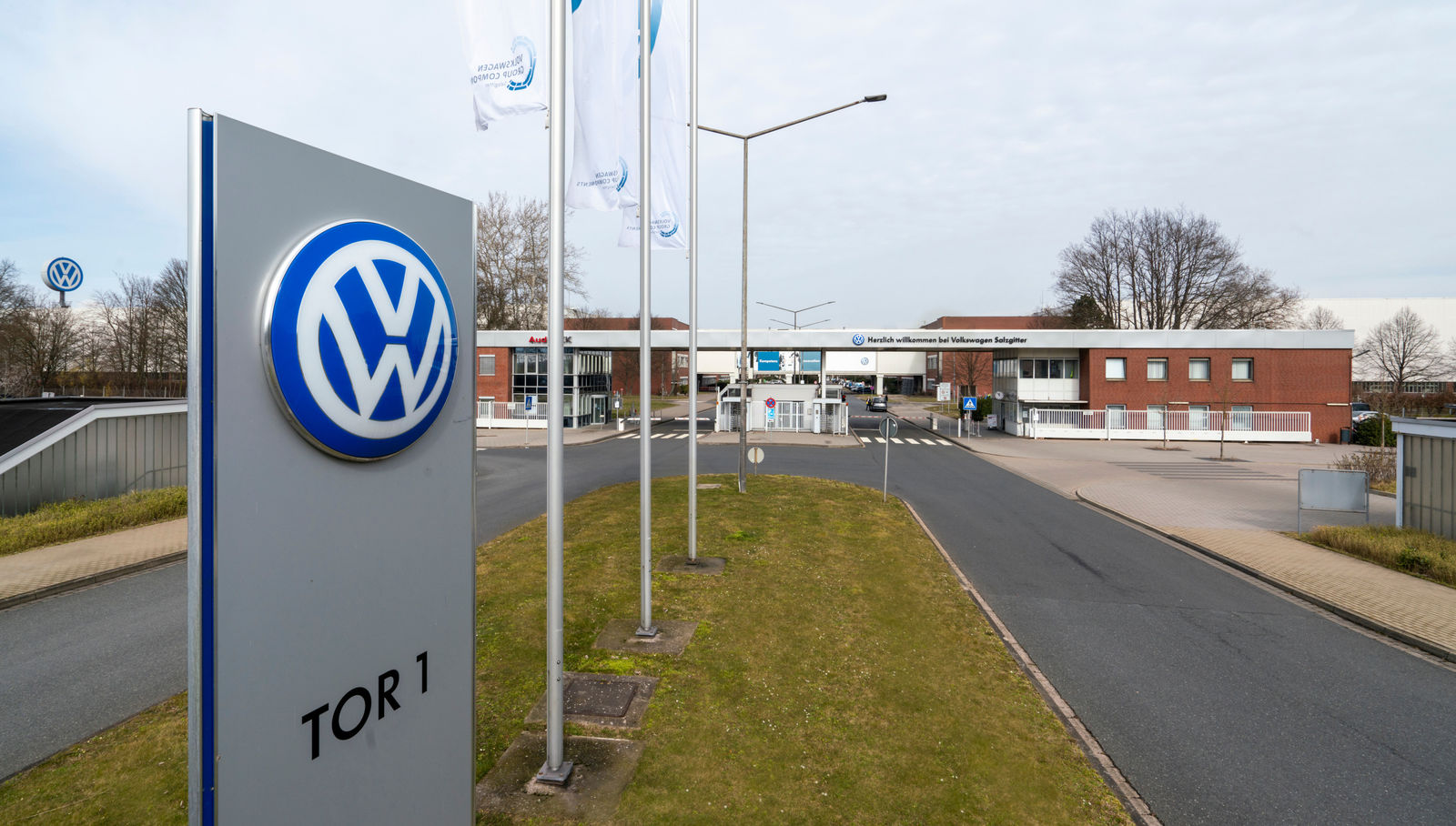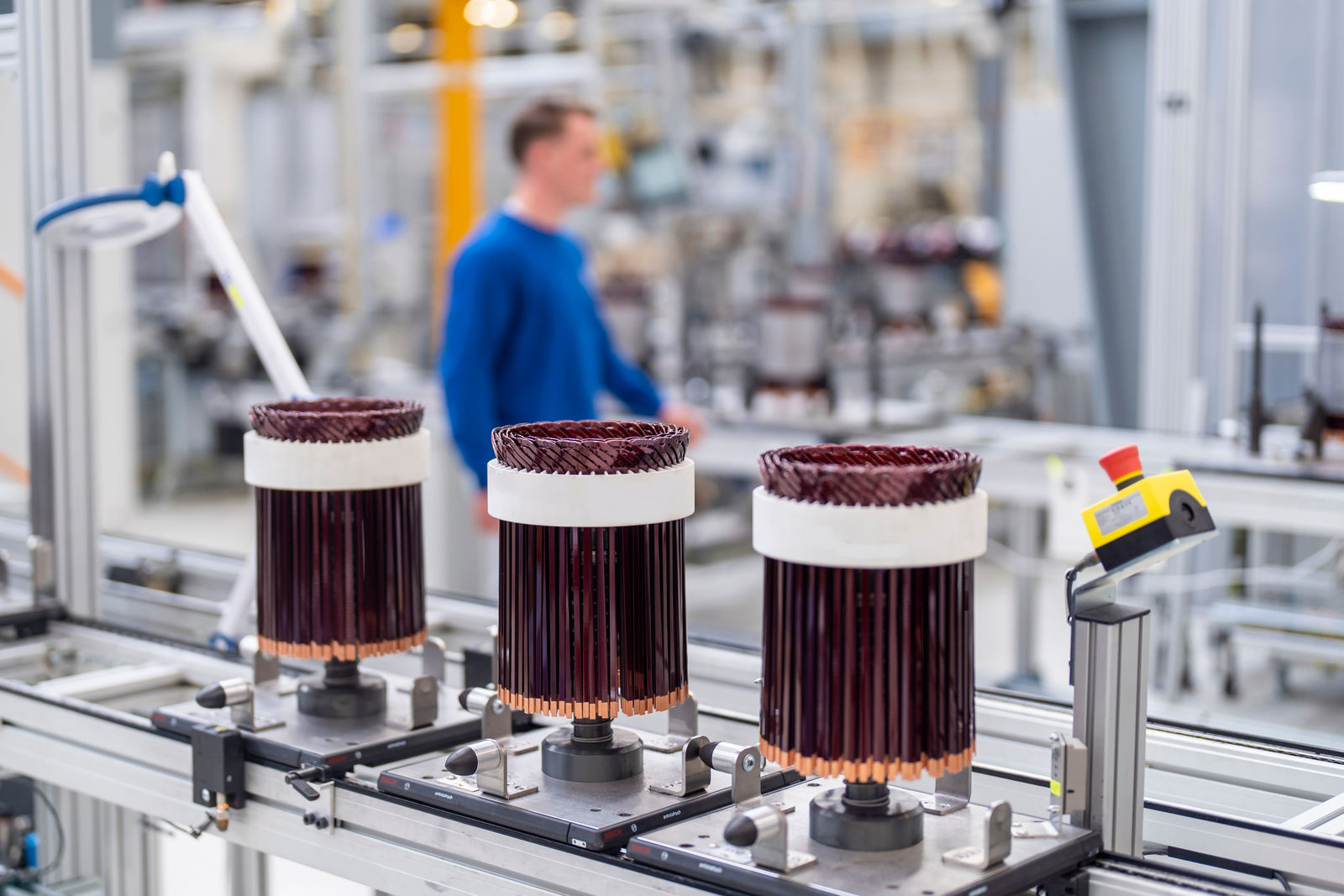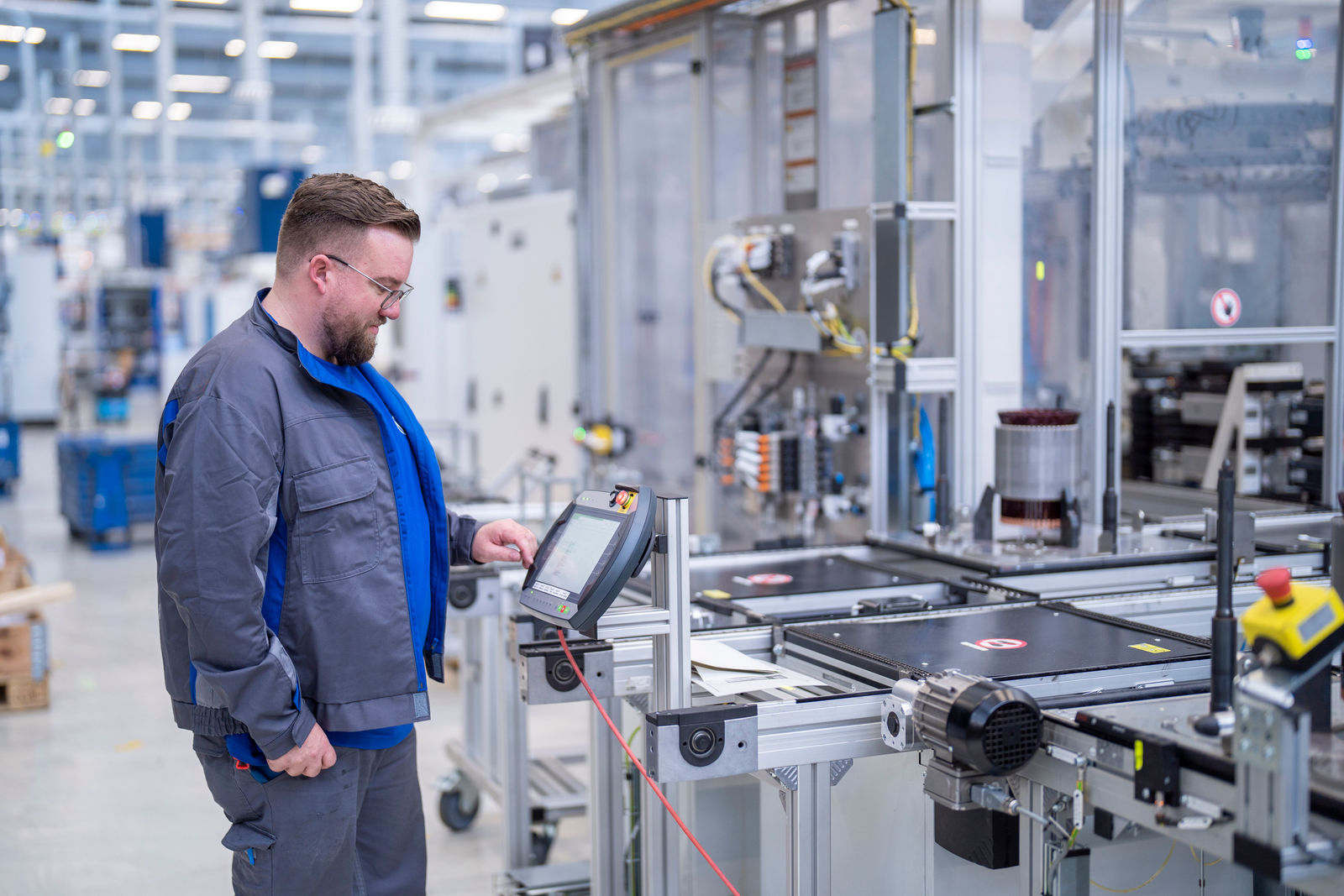| Area: | 2,800,000 m² |
| Production: | 786,000 engines (2024) |
| Models: | Engines, rotors/stators and components |
| Components: | Cylinder heads, crankshafts, conrods etc., |
| Employees: | around 7,500 at the site (2024) |
Volkswagen AG
Salzgitter Plant
Fundamental facts for press inquiries
Plant
Built as a vehicle plant for the K70 in 1970, the Volkswagen component plant in Salzgitter today manufactures engine variants as well as important e-components for electric vehicles. In the future, it is planned that the Salzgitter plant will become the battery hub for the Volkswagen Group. To this end, the Volkswagen Group is investing around 2 billion euros in the transformation from the main engine plant to the main battery cell plant.
The plant in Salzgitter is part of Volkswagen Group Components. This is an independent corporate business unit in the Group Technology division under the umbrella of Volkswagen AG and is responsible for development and manufacturing of strategic components for the Group’s vehicle-producing brands.
Production
Since the plant was founded in 1970, more than 65 million engines have been produced in Salzgitter. The power units are used in models of the brands Volkswagen Passenger Cars, Audi, ŠKODA, Seat, Volkswagen Commercial Vehicles and Bugatti.
Many millions of engine components are also manufactured in Salzgitter every year.
As part of the transformation towards electric mobility, the Salzgitter component plant
has specialised in the production of rotors and stators, two elementary components of an electric drive.
Both components are used in the models of the Volkswagen ID. family.
Plant management
Andreas Salewsky is the manager of the Salzgitter plant. The mechanical engineer has been at Volkswagen since 1999. After four years in Production Planning at the Salzgitter plant, he acted as Head of Series Planning at Volkswagen Motor Polska for three years. After returning to Salzgitter, he worked in various managerial positions from 2006 onwards before becoming Head of Production at the engine plant. Andreas Salewsky has been Plant Manager in Salzgitter since May 2019.
Salzgitter battery hub
It is planned that the Salzgitter plant will become the battery centre for the Volkswagen Group.
To this end, in the summer of 2022, Volkswagen entered the global battery business with the European public company PowerCo SE. Headquartered in Salzgitter, the company is responsible for the development and production of battery cells as well as the vertical integration of the value chain. PowerCo is currently building three cell factories: Salzgitter in Germany, Valencia in Spain and St. Thomas in Canada. All factories are equal and will produce the same product, our unified cell. The global ramp-up follows a modular approach and can be executed step-by-step in 20 GWh steps depending on the demand.
Also located at the plant in Salzgitter is the Center of Excellence Battery, or CoE for short, which represents a central interface between Group brands as vehicle manufacturers and cell suppliers such as PowerCo. In addition, the CoE is responsible for purchase modules, battery systems and technology partners.
The first Group-owned battery cell factory is being built in Salzgitter. The plant is therefore preparing the team for the new tasks and requirements with specially tailored training measures and information formats.
Vocational training is also being realigned: Since September 2022, Salzgitter has been offering the new vocational training occupation "chemical laboratory technician" for the first time, which prepares trainees for work in chemical laboratories. The combined study programmes in chemistry and chemical engineering are also new. By the time battery cell production starts in 2025, around 80 internally trained chemistry experts will already be on board.
History
The Salzgitter plant, which opened in 1970, was initially the production facility for the Volkswagen K70. Engine manufacturing started in the same year. From 1975, the factory concentrated on the manufacturing of engines and engine components. The Salzgitter plant celebrated the 50th year of its existence in summer 2020.
The plant is currently undergoing a transformation to electric mobility. The dismantling of conventional production is progressing slowly but surely, with digital solutions and modern production technologies optimising processes.
With the Center of Excellence Battery opened in Salzgitter in 2019, Volkswagen laid the first foundations for the transformation of the site from the engine lead plant to the cell lead plant.This was followed in July 2022 by the establishment of the European public company PowerCo, a company that manages the Group's global battery business along the entire value chain – from the supply of raw materials and the development to the construction and operation of gigafactories.
Since its launch in the summer of 2022, PowerCo SE has opted for the location of three cell factories. The first of these is being built in Salzgitter.
Media contact




